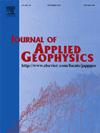Automatic picking of surface-wave dispersion curves with an image segmentation method
IF 2.2
3区 地球科学
Q2 GEOSCIENCES, MULTIDISCIPLINARY
引用次数: 0
Abstract
The surface-wave method is a widely used technique for shallow subsurface exploration, and the extraction of the dispersion curve is one of the most important steps in the surface-wave method. Traditionally, this extraction of surface-wave dispersion curves heavily relies on manual or semi-manual picking, which is both time-consuming and prone to human error, especially when dealing with large datasets. Recent developments in machine learning algorithms have provided a promising way for the automated extraction of surface-wave dispersion curves. We present a random forest (RF) algorithm designed for the automatic extraction of surface-wave dispersion curves. In this approach, the extraction task is conceptualized as an image segmentation problem, enabling a rapid and accurate extraction of dispersion curves from dispersion energy images. We generate a dataset of 1800 models and their corresponding dispersion images. The proposed method is tested on both the noise-free and noisy datasets contaminated by Gaussian noise. Synthetic results demonstrate that our proposed method achieves relatively high accuracy and efficiency in the automatic extraction of surface-wave dispersion curves. We further analyze the impact of tuning parameters, including the number and depth of random-forest trees in the proposed algorithm on its performance and choose the best parameters in our study. Finally, the trained RF model is applied to two field datasets, which confirms the validity of our proposed RF method.
求助全文
约1分钟内获得全文
求助全文
来源期刊

Journal of Applied Geophysics
地学-地球科学综合
CiteScore
3.60
自引率
10.00%
发文量
274
审稿时长
4 months
期刊介绍:
The Journal of Applied Geophysics with its key objective of responding to pertinent and timely needs, places particular emphasis on methodological developments and innovative applications of geophysical techniques for addressing environmental, engineering, and hydrological problems. Related topical research in exploration geophysics and in soil and rock physics is also covered by the Journal of Applied Geophysics.
 求助内容:
求助内容: 应助结果提醒方式:
应助结果提醒方式:


